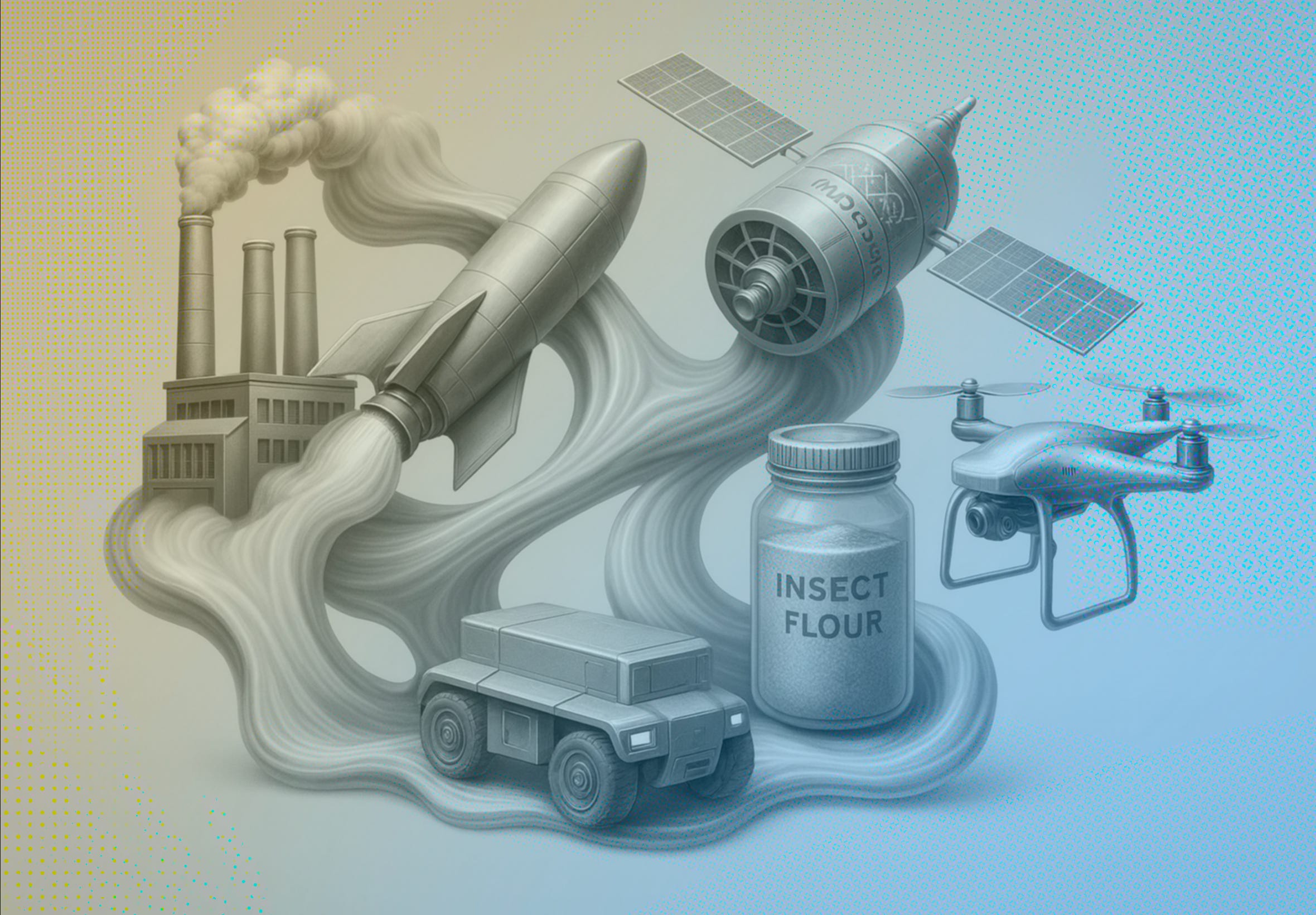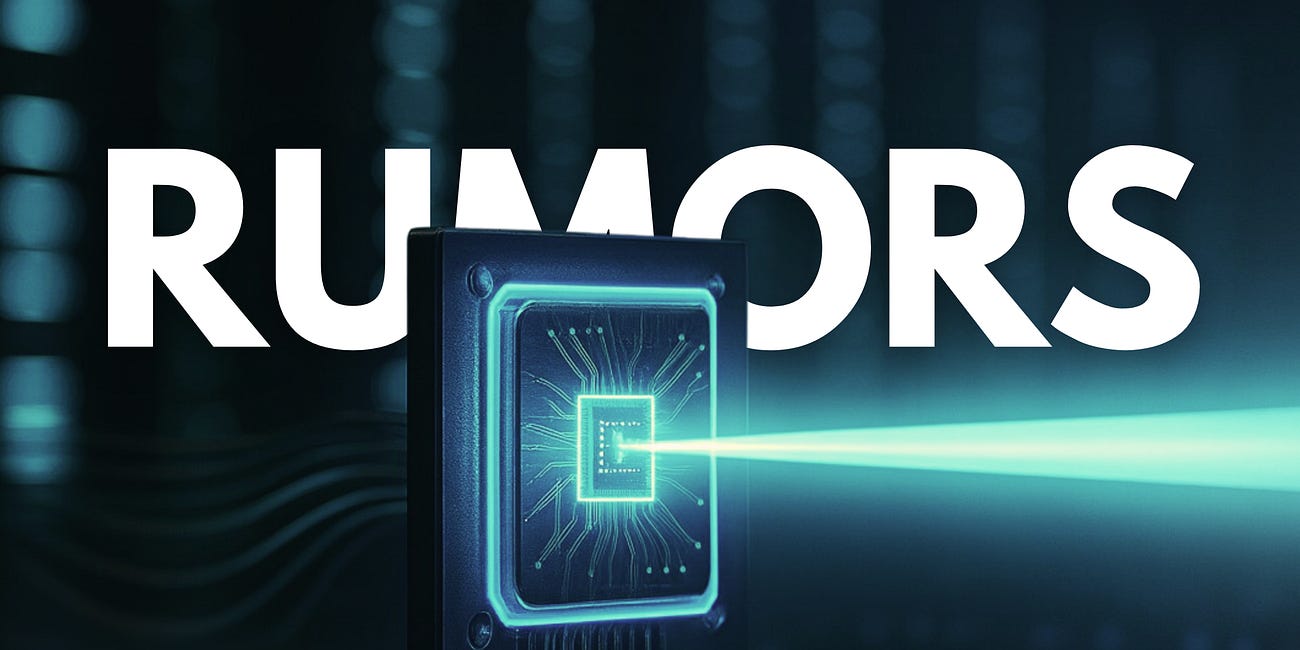✨Deep Tech Briefing #81 | First Blockchain-to-Orbit: Checks Beyond the (obvious) Hype Loop and more...
Weekly Intelligence on Deep Tech Private Markets.
Welcome back to Deep Tech Briefing — the weekly space by The Scenarionist where we analyze and discuss the key events of the week shaping Deep Tech Private Markets.
In Today’s Briefing:
Lite Edition
Roundup
Interesting Reading
Full Edition
The Big Idea:
The Big Idea: First Blockchain-to-Orbit: Checks Beyond the (obvious) Hype Loop.
A demo satellite relayed an encrypted blockchain transaction through space in a bid for a decentralized internet in orbit.
The Key Updates:
From orbital logistics and open silicon to geothermal power and hydrogen flight, industrial innovation is shifting from hype to hard tech — building resilient, AI-ready supply chains across energy, defense, and manufacturing.
Signal in the Data:
Industrializing healthcare software.
Scribes are the on-ramp to retooling U.S. care operations
Deep Tech Power Play:
Washington and Brussels open new fronts in energy security — critical minerals, grids, and reactors lead the charge.
Roundup
Dear Friends, welcome back to Deep Tech Briefing!
This week’s data points show a pragmatic shift. Projects that secure electricity, compute capacity, and physical distribution under imperfect conditions are moving forward, while business models built on perfect inputs are stalling. The evidence came from extended geothermal tests, incremental but concrete progress in hydrogen-electric propulsion, active street-level autonomy pilots, and renewed attention to open instruction sets in silicon.
Space logistics moved closer to defined service levels. Small, pre-positioned orbital capsules are targeting the delivery of modest payloads within tight time windows. Performance now depends on controlled deorbit burns, landing dispersion, and turnaround times. The most likely early adopter is defense logistics; broader use will depend on insurability and reliable ground operations. Suppliers of heat shields, avionics, and recovery hardware could see accelerated orders if demonstration cadence remains steady.
In semiconductors, diversification is the central theme. Custom inference chips based on open architectures are being developed on timelines that overlap continued GPU demand. The outcome will hinge more on software stacks and verification throughput than on transistor counts. Companies providing verification IP, compiler/runtime bridges, advanced packaging, and HBM co-design are in advantaged positions—especially if U.S. policy continues to reward domestic assembly and testing.
Energy markets are balancing capacity needs with siting constraints. Closed-loop geothermal delivered model-aligned output over several months using vertical wells and conductive fluids, suggesting a path to firm power near data centers with limited water intensity. Key questions remain around drilling consistency, supply chain depth, and long-term O&M. Hydrogen-electric propulsion reached a full-scale test configuration; certification and airport fuel logistics now determine the schedule. In both cases, component suppliers for valves, tanks, thermal systems, and hybrid buffers have clearer near-term revenue visibility than platform developers.
Urban autonomy pilots are being judged by operations, not demonstrations. Mixed-mode delivery robots deployed in dense neighborhoods under variable weather conditions provide data on rescue frequency, battery swaps, and on-time rates. Mid-speed, road-legal units are being evaluated for safety behavior, intervention minutes, and delivery quality over distance. Investors should discount headline fleet numbers and watch service-level consistency across seasons.
Policy remains focused on supply security. U.S. initiatives pair technology with permitting and workforce programs to shorten mining cycles. European commitments target transmission and rural access across Africa, building reliable grid backbones.
You’re reading the Lite edition of Deep Tech Briefing. For a full view of the week’s key developments across new breakthroughs, permits, industrial partnerships, IPO signals, and policy shifts shaping the deep tech landscape, unlock the full version here.
Enjoy the read!
- Giulia
✨ For more, see Membership | VC Guides | Insights | Rumors | Exit
The Optical Interconnect Rush: Powering the New AI Network Stack | Rumors
Six Startups, One Rumor. A new generation of photonic technologies is rewiring data‑center networks for the AI era—at light speed and with radical efficiency.
Interesting Reading:
If you’re not an AI startup, good luck raising money TechCrunch — VC skews heavily to AI as fund formation slows; non-AI founders need sharp wedge metrics, strategic buyers, or category-adjacent AI angles.
Europe has too many drone startups Sifted — capital is concentrated, moats are thin, and consolidation is inevitable; defensibility shifts to autonomy stacks, data, and mission-specific payloads.
Taiwan’s post-nuclear power puzzle IEEE Spectrum — with restarts stalled and chip/AI demand rising, the island leans on gas and renewables; reliability, SMR prospects, and carbon exposure in focus.
How a Silicon Valley “warlord” got the Pentagon’s attention Reuters — a scrappy anti-drone system becomes a case study in narrative timing, field demos, and procurement savvy; signals a friendlier window for dual-use upstarts.
Agrifoodtech investment models need a rethink? AgFunderNews — ag isn’t SaaS: longer horizons, service-heavy GTM, ROI proof at the grower; “hot”: robotics/AI; “not”: carbon markets & precision fermentation (for now).
BlackRock’s GIP nears a $38B takeover of AES Reuters — AI-era power demand is fueling utility dealmaking; if it lands, expect a debt/renewables balancing act and a fresh template for infra–AI convergence.
Chamath warns retail investors to avoid his new SPAC TechCrunch — unusual message from the sponsor behind “American Exceptionalism”; signals a more sober, institution-led SPAC 2.0 playbook.
America’s aging dams face a relicensing cliff Canary Media — hundreds of hydropower plants confront lengthy, costly reviews; policy tweaks and CFE contracts could keep megawatts online for data centers and decarbonization.
Introducing the hydride battery C&EN — first room-temperature, rechargeable hydride-ion prototype points to a new solid-state chemistry lane; promising early cycles, but materials and scale remain uphill.
Biotech’s share of U.S. VC hits a cycle low Crunchbase News — AI crowds out life sciences; IPO windows narrow and early-stage pacing cools—plan for longer runways and platform-story discipline.
The Big Idea: First Blockchain-to-Orbit: Checks Beyond the (obvious) Hype Loop
A demo satellite relayed an encrypted blockchain transaction through space in a bid for a decentralized internet in orbit.
A radio whisper left Chile, arced through low Earth orbit, and landed in the Azores. The payload wasn’t a movie stream or weather maps; it was a signed blockchain message, ferried without touching the public internet. The claim tested a simple idea: can cryptographic integrity survive a space hop? On that narrow point, the answer appears to be yes.
The path was straightforward and auditable: uplink from Punta Arenas over S-band to a nanosatellite, then downlink to a ground station in Portugal—about 7,000 kilometers end-to-end. The team framed it as a first step toward an orbital relay for encrypted traffic that routes around terrestrial chokepoints. The packet rode a Creditcoin test environment rather than a major public mainnet, and the proof was showcased around TOKEN2049.
From here, the harder questions begin.







